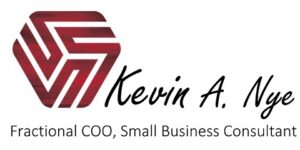What is an ESOP and how does it work?
Employee Stock Ownership Plans (ESOPs) are a type of employee benefit plan that provides workers with an ownership stake in the company for which they work. ESOPs can be an effective tool for business owners who are looking to provide their employees with a valuable benefit, retain key talent, or transition ownership of the company to the next generation of leaders.
Here’s how it works:
The company sets up an ESOP trust. The trust is a separate legal entity that holds and manages the stock on behalf of the employees. The company contributes stock or cash to the ESOP, which is then used to purchase shares of the company’s stock. The trust can also borrow money to finance the purchase.
The ESOP allocates shares to individual employee accounts based on a predetermined formula. The formula used can be based on factors such as salary or length of service. Employees receive benefits in the form of dividends, which are paid out based on the number of shares in their accounts.
When an employee leaves the company, they have two options. They can either sell their shares back to the ESOP or to other employees in the company. When the employee retires, they can either sell their shares back to the ESOP or to the company. This is determined by the terms of the plan.
What are the benefits of an ESOP for business owners?
Tax benefits
One of the key benefits of an ESOP for business owners is the tax advantages it provides. By selling stock to the ESOP, owners can often defer or avoid capital gains taxes on the sale. Contributions made to an ESOP are tax-deductible, which can help reduce the company’s tax burden. Additionally, if the ESOP owns more than 30% of the company’s outstanding stock, the company can become an S corporation. This allows the business to avoid paying federal income taxes on its earnings.
Succession planning
An ESOP can be an effective way for business owners to sell their companies and transition ownership to their employees. This can be especially attractive to owners who want to keep the business in the hands of the people who helped build it and ensure its long-term success. ESOPs also allow owners to gradually transition ownership of the company to employees over time.
Motivating employees
By giving employees a stake in the company, an ESOP can help motivate and engage them in the success of the business. This can lead to increased productivity and loyalty, which can ultimately benefit the company’s bottom line.
Retention
An ESOP can also be an effective tool for retaining key employees. Because the plan is tied to the company’s stock price, employees have the incentive to stay with the company and work to increase its value. This can increase employee engagement and loyalty. It also provides employees with a financial incentive to contribute to the company’s success.
Financing
An ESOP can also be used to finance the growth or acquisition of a company. By using the plan to purchase shares of the company’s stock, the company can raise capital without taking on additional debt. This capital can be used for growth or expansion.
Drawbacks of ESOPs for Business Owners
While there are many benefits to an ESOP, there are also some drawbacks to consider. One potential drawback is the dilution of ownership. By selling stock to the ESOP, owners may reduce their ownership stake in the company, which can impact their control over the business. Establishing and maintaining an ESOP can also be expensive, and there may be ongoing administrative costs associated with the plan. Owners who sell stock to an ESOP may also be exposed to risk associated with the company’s financial performance, which could impact the value of the ESOP shares.
Is an ESOP a good exit strategy for owners?
An ESOP can be a good exit strategy for business owners in some circumstances, but it’s not necessarily the best option for everyone. Here are some of the factors to consider when evaluating whether an ESOP is a good exit strategy for a particular owner:
The owner’s goals
An ESOP can be an effective way for an owner to transition ownership to their employees while maintaining the company’s culture and legacy. If the owner is interested in preserving the company’s values and continuing its mission, an ESOP may be a good fit.
The company’s financial situation
An ESOP can be a good option for companies that have a stable or growing cash flow and can generate enough profits to support the contributions required to fund the plan. Companies that are highly leveraged or have a significant amount of debt may not be good candidates for an ESOP.
The owner’s timeline
An ESOP can be a long-term exit strategy that can take several years to execute. If the owner is looking for a quick and simple exit, an ESOP may not be the best option.
The tax implications
An ESOP can provide significant tax advantages for business owners, but the specifics can vary depending on the structure of the plan and the owner’s individual tax situation. It’s important to work with a qualified tax advisor to evaluate the potential tax benefits and risks.
The owner’s comfort with risk
An ESOP is essentially a bet on the company’s future success. If the company performs well, the value of the owner’s shares will increase, and they will receive a higher sale price. If the company underperforms, the owner may receive a lower sale price than they would with a traditional exit strategy.

Is an ESOP good for employees?
What are the benefits of employee stock ownership?
For employees, one of the primary benefits of an ESOP is that it can provide them with a retirement benefit in the form of company stock. This can give employees a financial incentive to contribute to the success of the company, as well as potentially provide them with a valuable asset for their retirement.
Employees who have an ownership stake in the company tend to be more engaged and committed to the success of the business. They may also enjoy tax benefits associated with participating in the ESOP.
Wealth creation
Through an ESOP, employees have the opportunity to accumulate wealth as the company grows and its stock price increases. This can provide a valuable retirement benefit for employees, particularly if the ESOP is well-designed and well-managed.
Increased motivation and engagement
When employees have a stake in the company through an ESOP, they may be more motivated to work hard and contribute to the company’s success. This can lead to increased productivity, improved job satisfaction, and lower turnover rates.
Retirement benefits
ESOPs can provide a competitive retirement benefit for employees. This is especially true if the company makes contributions to the ESOP on their behalf. In some cases, employees may be able to receive distributions from the ESOP tax-free, depending on the specific rules and requirements of the plan.
Alignment of interests
By giving employees a stake in the company, an ESOP can help align their interests with those of the company’s owners and management. This can promote a culture of teamwork and shared goals, which can ultimately benefit the company’s bottom line.
Job security
ESOPs can provide a measure of job security for employees. The company may be less likely to lay off workers during difficult times if it has an ESOP in place.
Drawbacks of ESOPs for Employees
There are also some drawbacks for employees to consider. One potential drawback is the lack of diversification. Employees who hold a significant portion of their retirement savings in company stock will suffer from a lack of diversification. This increases their overall investment risk.
In addition, depending on the plan, employees may have limited ability to sell or transfer their ESOP shares. This could impact their ability to access the value of the shares when needed. Finally, as with owners, employees who hold ESOP shares may be exposed to financial risk associated with the company’s performance. If the company doesn’t do well, it can impact the value of its shares.
What happens to ESOP money when you leave a company?
If you leave a company where you were a participant in an ESOP (Employee Stock Ownership Plan), the treatment of your ESOP account will depend on a number of factors, including the terms of the plan and the reason for your departure. Here are some common scenarios:
Vested balance
If you have a vested balance in the ESOP, you are entitled to receive the value of your account balance, which may be paid out in cash or company stock. The specific terms of the plan will determine the timing and form of the distribution.
Unvested balance
If you have an unvested balance in the ESOP, you may forfeit some or all of your account balance, depending on the vesting schedule and the terms of the plan.
What happens to my ESOP when I retire?
If you retire from the company, you may be eligible to receive a distribution of your vested ESOP account balance, subject to the terms of the plan.
What happens to my ESOP if I get fired?
Termination for cause
If you are terminated for cause, such as for violating company policy or engaging in illegal activity, you may lose your entire ESOP account balance, regardless of whether it is vested or unvested.
Voluntary termination
If you voluntarily terminate your employment, you may be eligible to receive a distribution of your vested ESOP account balance.
Is an ESOP better than a 401k?
While ESOPs and 401(k)s both offer retirement benefits to employees, they are different in a number of ways. For example, ESOPs primarily invest in the stock of the sponsoring company. 401(k)s typically offer a range of investment options. Additionally, ESOPs are primarily funded by the company, while 401(k)s are primarily funded by employee contributions (although employers can and usually do make contributions as well). Finally, while ESOPs are subject to ERISA regulations, 401(k)s are subject to both ERISA and IRS regulations.
Another key difference between ESOPs and 401(k)s is the degree of risk involved. While 401(k) accounts are subject to market fluctuations, ESOP accounts are directly tied to the performance of the sponsoring company. This means that employees who participate in an ESOP are more exposed to financial risk associated with the company’s performance. Employees who participate in a 401(k) are more exposed to overall market risk.
Choosing between an ESOP and a 401(k) depends on the company’s goals, the level of employee engagement desired, and the risk tolerance of both the company and its employees.
Conclusion
ESOPs can be a valuable tool for business owners who are looking to provide their employees with a valuable benefit, retain key talent, or transition ownership of the company to the next generation of leaders. However, they also come with some drawbacks, including the potential for dilution of ownership and lack of diversification. Employees can benefit from ESOPs by having a retirement benefit in the form of company stock, but they are also exposed to risk associated with the company’s performance.
For more information about Employee Stock Ownership Plans, visit ESOP.org.


